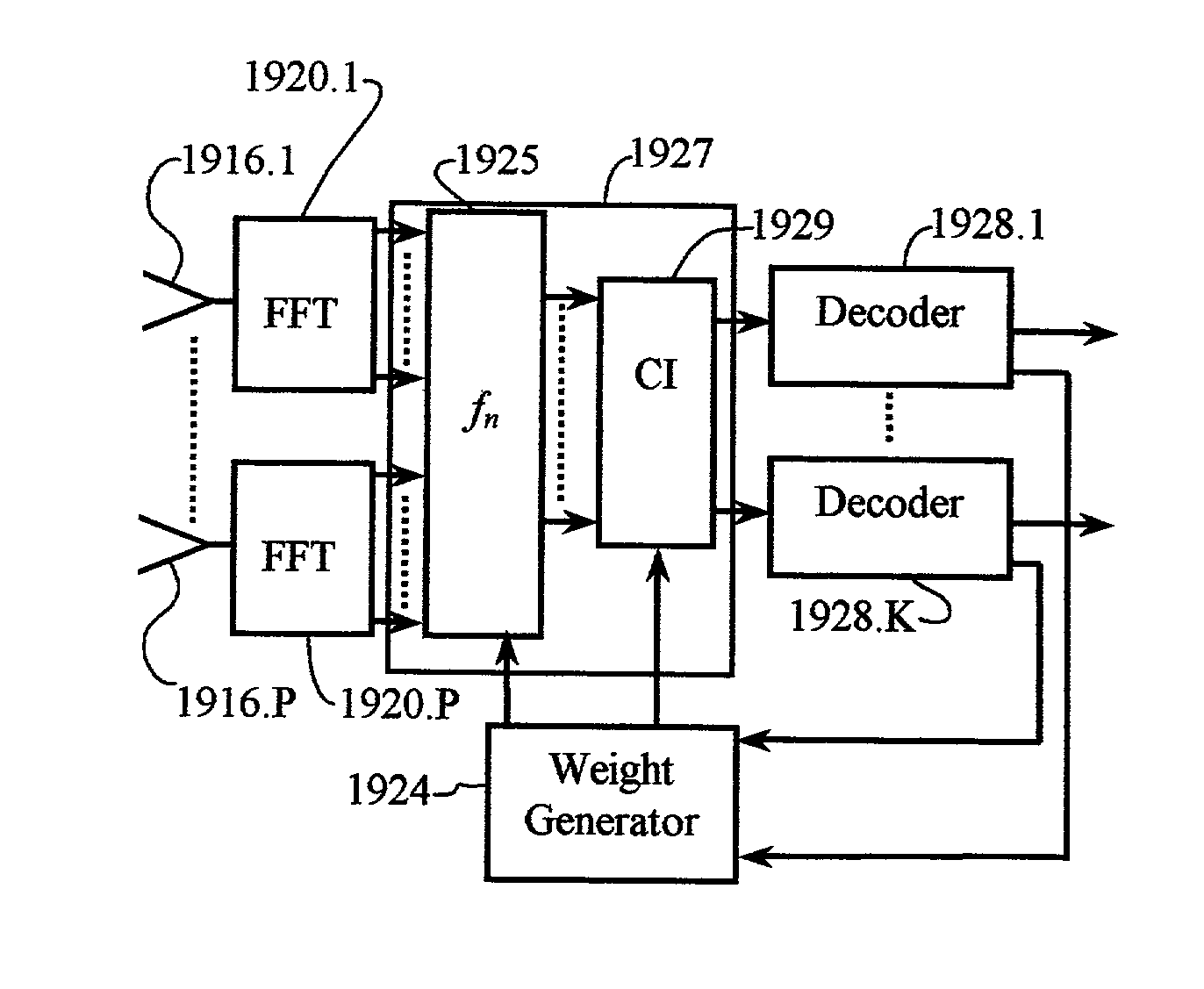Multicarrier sub-layer for direct sequence channel and multiple-access coding
a sub-layer and channel technology, applied in the field of direct sequence code division multiple access (dscdma), direct sequence spread spectrum (dsss), multi-carrier spread spectrum communication, can solve the problems of multi-path fading, symbol interference, and delay greater than the duration, so as to reduce the cost of antenna infrastructure deployment, reduce the cost of the overall system, and improve system performance
- Summary
- Abstract
- Description
- Claims
- Application Information
AI Technical Summary
Benefits of technology
Problems solved by technology
Method used
Image
Examples
Embodiment Construction
[0290]The description of the preferred embodiments assumes that the reader has a familiarity with CI described in the following publications, which are incorporated by reference:[0291]1. B. Natarajan, C. R. Nassar, S. Shattil, M. Michelini, “Application of interferometry to MC-CDMA”, accepted for publication in IEEE Transactions on Vehicular Technology.[0292]2. C. R Nassar, B. Natarajan, and S. Shattil, “Introduction of carrier interference to spread spectrum multiple access,” IEEE Emerging Technologies Symposium, Dallas, Tex., 12-13 Apr. 1999.[0293]3. B. Natarajan and C. R. Nassar, “Introducing novel FDD and FDM in MC-CDMA to enhance performance,” IEEE Radio and Wireless Conference, Denver, Colo., Sep. 10-13, 2000, pp. 29-32.[0294]4. Z. Wu, C. R. Nassar, A. Alagar, and S. Shattil, “Wireless communication system architecture and physical layer design for airport surface management,” 2000 IEEE Vehicular Technology Conference, Boston, Mass., Sep. 24-28, 2000, pp. 1950-1955.[0295]5. S....
PUM
 Login to View More
Login to View More Abstract
Description
Claims
Application Information
 Login to View More
Login to View More - R&D
- Intellectual Property
- Life Sciences
- Materials
- Tech Scout
- Unparalleled Data Quality
- Higher Quality Content
- 60% Fewer Hallucinations
Browse by: Latest US Patents, China's latest patents, Technical Efficacy Thesaurus, Application Domain, Technology Topic, Popular Technical Reports.
© 2025 PatSnap. All rights reserved.Legal|Privacy policy|Modern Slavery Act Transparency Statement|Sitemap|About US| Contact US: help@patsnap.com



